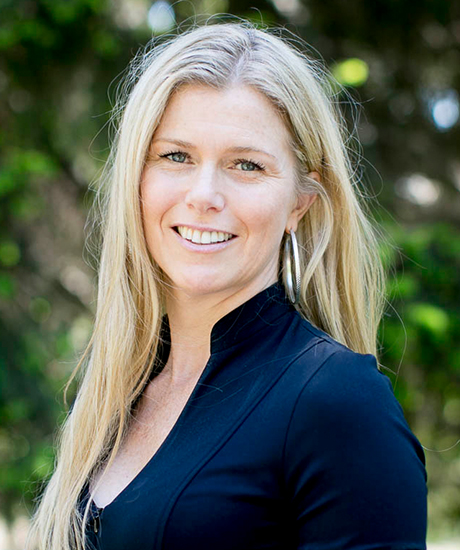
from the field
By Kate Gerson
A path to more equitable schools
ur education system is inequitable. I raise this uncomfortable topic as a former teacher and principal. As the daughter of teachers. As someone who is deeply connected to and loves education. As someone who is white.
Our system is set up to fail some of our students, particularly black, Latino and poor students. Yes, we inherited this system and all of its past wrongdoings, but now we make the decisions. What happens to students in our schools and communities can’t be blamed on a faceless, immovable “system” any longer. We are the system now. The higher dropout rates among Latino students, higher rates of discipline among black students, and the gap in academic performance that follows racial lines; these are outcomes from a broken system that we lead.
The good news? Change is possible. It requires us to pay attention to the decisions we make, both large and small. It’s hard work that involves everyone: teachers, coaches, principals, district staff, superintendents and school board members alike. Taking on the five research-informed principles below will help drive meaningful change for the schools and students about whom we care so deeply.
1. Adopt a standards-aligned curriculum
A quality curriculum has the same positive impact on learning as having an effective teacher.1 The benefits of adopting a standards-aligned curriculum are so clear that the California English Learner Roadmap has already recommended it. Yet, less than half of all classroom assignments are aligned to even one specific grade-level standard.2 In the absence of an aligned curriculum, many teachers pull lesson plans from internet searches or sites like Pinterest. We have to make it easier for teachers to find and use a coherent, comprehensive standards-aligned curriculum that connects learning within and across grades.

2. Focus on the language of the standards themselves
Creating a connection between classroom activities and the language in individual standards is harder than it seems. Often teachers develop well-intentioned assignments that have nothing to do with mastering the standards. Is a standard asking students to explain events in a historical text or to relate historical events to the student’s own life? Is the standard asking a student to solve a word problem using the four mathematical operations, or is it asking the student to memorize the mnemonic device FOIL [first, outer, inner, last]? In both cases, the correct answer is the first one, but students often get the second! When district leaders use the language of the standards, they can rely on that lens in all of their strategies, walk-throughs, feedback and decisions.
3. Examine our bias
Our personal biases reflect and perpetuate the systemic inequalities that exist today, so it is critical we examine our own feelings, attitudes and beliefs. Many biases are unconscious and require intentional effort to recognize and correct. Everyone involved in a district makes decisions informed by our biases. When we leave racial bias unexplored, it manifests in outcomes like disproportionately higher suspension rates for black and Latino students. Statewide, black students are three times more likely than white students to be suspended.5 Leading against unconscious racial bias includes making a personal commitment to unpacking your own bias; modeling that work for your district; and providing space, time and support to the adults in your district — regardless of their role — to unpack theirs.
4. Create a plan to talk about systemic racial inequality
It is hard to acknowledge, but systemic racial inequality plays a part in virtually all schools. Evidence of this is in the racial makeup of teachers compared to the students they teach. In California, 63 percent of public school teachers are white, but 77 percent of students are not.3 Inequality is also present in the gap between the collective performance of children of different races. According to the Education Trust–West, 60 percent of white third-graders in California met or exceeded English language arts standards, compared to 30 percent of Latino children and 27 percent of black children.4 Conversations about race and the way it works in this country can be uncomfortable, but pretending structural inequality does not play a role in our lives, and students’ lives, only perpetuates the problem. If your district needs help creating a plan, UnboundEd has developed a toolkit you can use called “Disrupting Inequity: Having Brave Conversations About Bias.”
5. Support adaptive change
Educators cannot implement the steps above through intellectual understanding or technical fixes alone. They demand deeper shifts.6 Taking on these changes will require learning new values, beliefs, behaviors, habits, loyalties and priorities. At UnboundEd’s Standards Institute, we empower educators to make this type of adaptive change. Our weeklong conference in San Diego in July will focus on how to begin and continue the practice of adaptive change. Supporting this kind of professional learning in your district demonstrates that you understand the great challenges educators face as they continually recommit to meeting their students where they are and closing the achievement gap.
I know you have many important changes underway already, and this list may not be what you have prioritized. However, without attending to the role of both curriculum and race in our schools, we let an inequitable system persist and fail to properly serve students of color.
Endnotes
- Kane et al. (2016). Teaching Higher: Educators’ Perspectives on Common Core Implementation. Retrieved from https://bit.ly/1QpqAtu
- The Education Trust. (2015). Checking In: Do Classroom Assignments Reflect Today’s Higher Standards. Retrieved from https://bit.ly/2KUdN6X
- California Department of Education (2017). “Fingertip Facts on Education in California – CalEdFacts.” Retrieved from https://bit.ly/2IN19ug
- The Education Trust–West (2017). “The Majority Report.” Retrieved from https://bit.ly/2IN1FbG
- California Department of Education (2017). Retrieved from https://bit.ly/2IOT9Vd
- Heifetz, Ron (2007). Perspectives on Change. Retrieved from: https://bit.ly/2J1RgrF
Kate Gerson is the managing partner of programs at UnboundEd, an organization dedicated to empowering teachers by providing free, high-quality standards-aligned resources for the classroom, the opportunity for immersive training through its Institute, and the option of support through its website offerings. www.unbounded.org